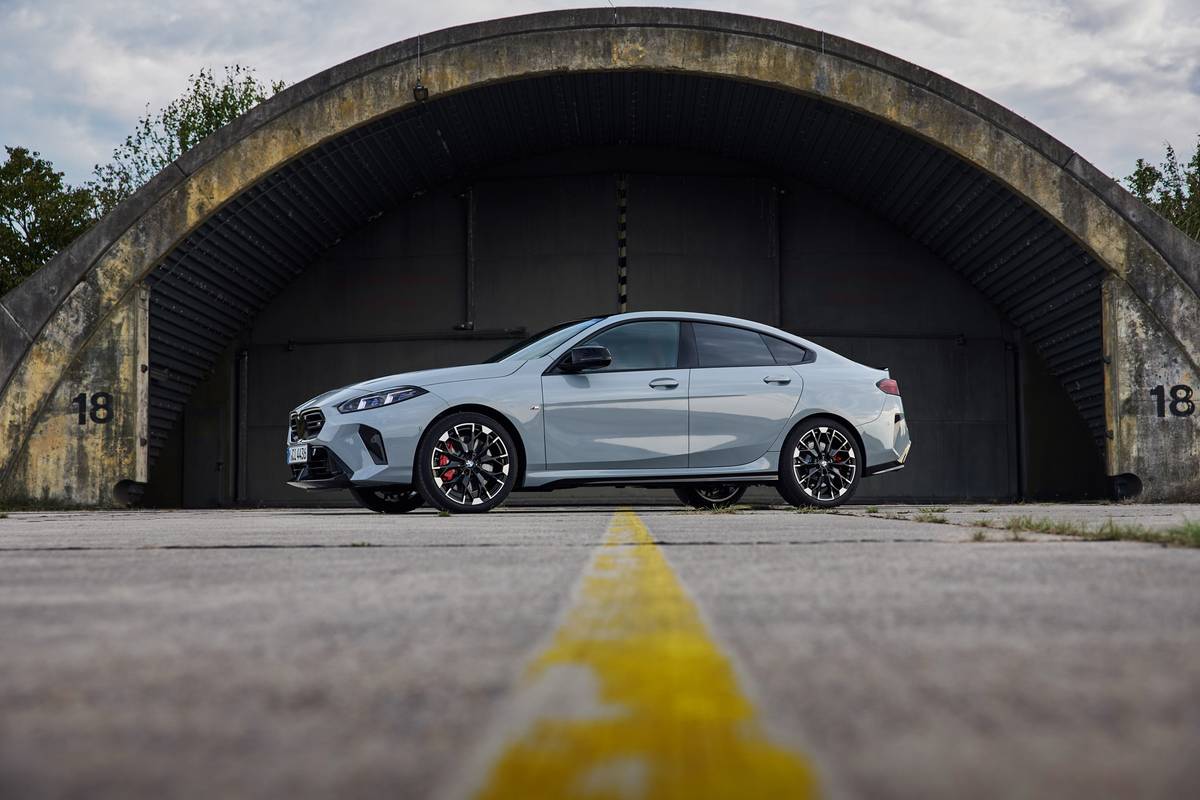Orlando Sentinel's view
Sometimes I think American car companies don’t really get cranking until they are under a great deal of pressure.
General Motors is a good example.
Six years ago, Chevrolet’s Corvette – the most-loved and oldest nameplate in the GM lineup – was dying of old age, and GM was nearly bankrupt. A new version of the Corvette was put on hold as the buzzards began to circle over the GM empire.
Today, GM is firing on all eight cylinders, and the new Corvette is the best sports car under $50,000 in the world.
What happened? By focusing on quality, performance, safety and value, new leadership at GM guided the world’s biggest automaker back from the brink.
The new Corvette offers blistering performance, world-class refinement and all the features you could want in a two-seat sportscar at a price that no other manufacturer can equal.
PERFORMANCE, HANDLING
When Chevrolet engineers introduced the small-block V-8 in 1955, it was one of the world’s best engines.
It still is.
In these days of complex and expensive overhead cam, four-valve- per-cylinder engines, Chevy’s good old pushrod V-8 can still perform with the best of them.
Although the basic design of the 1998 small-block V-8 is the same as the original, inside and out it sports all sorts of high-performance hardware. To save weight, the 1998 V-8 is made entirely of aluminum. And it provides serious motivation when you press the accelerator into the carpet.
The Corvette’s 5.7-liter small-block pushrod V-8 cranks out 345 snarling horsepower. When mated to a manual transmission, the engine is capable of propelling the Corvette to 60 mph in a neck-snapping 4.7 seconds.
The Corvette V-8 sounds great and has a nearly endless range of power. Acceleration is brutally strong at all speeds.
Chevrolet supplied two test cars, one with a four-speed automatic transmission, the other with a six-speed manual gearbox. The car with the six-speed also had Chevrolet’s all-new active suspension that helps keep the car under control on slippery roads. Both cars were tremendous fun to drive.
If you want to feel the full force of raw acceleration, stick with the stick shift. Though the clutch pedal goes down smoothly, it is a bit heavy. However, when you take off from a stop in first gear, the four exhaust pipes rumble and roar, and the Corvette flies off like a rocket.
Shifting the manual gearbox is fairly easy – however, there is one annoying feature. In most cases, you have to shift from first gear into fourth. An electronic device forces the gear shifter lever into fourth gear when the car is going between 15 and 19 mph. Chevy says shifting from first to fourth maximizes the engine’s efficiency. That may be so, but I prefer shifting through the gears in the proper order.
Unlike most sports cars, the Corvette’s engine and transmission are not bolted together. The transmission is mounted behind the driver and connects to the engine by a driveshaft. This arrangement helps balance the weight of the car.
Balance is a good word to describe the Corvette’s ride and handling. In previous versions of the Corvette, handling took a back seat to straight line performance. But the 1998 model offers a terrific balance of both.
The four-wheel independent suspension system provides a firm and stable ride. Only the harshest of bumps will cause the Corvette to shudder. Steering is strictly a point and shoot affair. You point the nose into a curve and then shoot straight through. You don’t have to make compromises by keeping your foot poised over the brake pedal.
The active suspension system comes as part of the Indy Pace Car Package and adds a whopping $5,754 to the price. The system adds sensors that enable a computer to keep the car pointed in the direction of the steering wheel.
Speaking of steering, the 1998 car’s turning radius is much better than on the previous generation Corvette. Now you can turn a tight enough circle to make a U-turn and to squeeze into a parking space.
Despite its awesome power, the Corvette is easy to drive. Two co-workers drove the Corvette automatic as easily as they would any other car.
FIT AND FINISH
Everything about the Corvette, from its soft window and mirror buttons on the door panels to the nicely styled needles on the analog gauges, has a unique look. I don’t recognize any parts culled from other GM cars.
The leather seats are firm and comfortable and offer excellent lower back support. The Corvette is one sports car that you can spend many hours in without suffering discomfort and fatigue. The power driver’s seat moves back and forth and up and down, so nearly any body can find the right setting. The passenger’s seat must be manually adjusted.
There isn’t much room to store things inside the car – and this may be the Corvette’s only weak point. Map pockets on the doors are not possible because of the large Bose speakers. The center console is not very deep, so it won’t hold items larger than a CD, sunglasses or keys. There is only a small amount of room behind the seats.
The trunk is wide enough to hold a couple of golf bags, but it is not very deep. There is more trunk room in the Corvette model with the removable hardtop.
Chevrolet outfits the Corvette with enough items to make it a luxury grand-touring car. Standard equipment includes automatic air conditioning, power windows, mirrors and door locks, a powerful stereo system, cruise control and rear-window defroster.
The Corvette’s computerized information system is sophisticated but very easy to use. Buttons on the right of the instrument cluster allow the driver to check the pressure in all four tires, monitor the engine temperature, oil pressure and temperature.
The driver also can get fuel information detailing how many miles the car can go before it’s empty, plus instant and average fuel economy. In the city, our test car averaged 19.8 mpg; on the highway that figure rose to 31, according to the car’s computer. The computer also lets the driver set the alarm system, door locks and other features.
Some might say that a convertible with a price tag of more than $40,000 ought to have a power top. But I found that it takes only a few seconds to undo the latches, raise the rear cover and drop the top into the well behind the seats. Raising the top is also quick and easy.
Both test cars were assembled flawlessly. I heard no squeaks or rattles, and there were no wind or water leaks.
Later this year, a third Corvette model, a hardtop, will join the targa and convertible models. The hardtop is rumored to have a price starting in the low 30s.
If this comes to pass, I can think of no reason to own any other sports car – foreign or domestic. None matches the power, performance and equipment of the 1998 Corvette for anywhere near the same money.
Specifi cations: Base price: $44,899 Safety: Dual air bags, traction control, anti-lock brakes, daytime running lights and side-impact protection. Price as tested: $45,464 EPA rating: 17 mpg city/25 mpg highway. Incentives: None.
Truett’stip: Despite some very stylish, affordable and well-built sports cars from Germany and Japan, nothing delivers more bang for the buck than the 1998 Corvette.
Latest news



